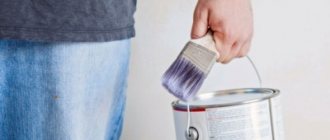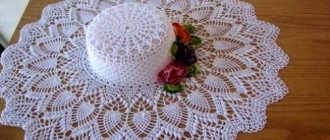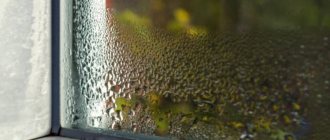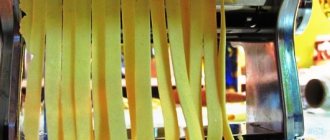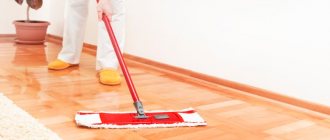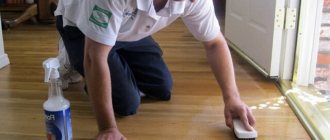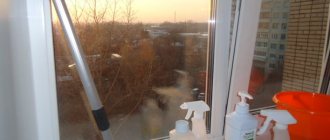After reading this article to the end, you will replenish your knowledge and will have information on how to cook paste from flour, starch for wallpaper and papier-mâché at home. This information can definitely come in handy when renovating an apartment and making crafts, so we recommend you read it.
Before we start updating our premises, we go to construction stores, where we see what a huge number of different finishing materials there are, including wallpaper of different types and textures. You probably guess, or a representative of the store where you will purchase wallpaper will tell you for sure, that each type of coating requires a certain type of glue. You can find out how to dilute wallpaper glue from our review.
There will also be no serious problems with the choice of glue or purchase, because there are various options available on the market, and you will definitely find the right one. But it should be noted that factory-made adhesive compositions contain a variety of toxins (impurities) that can negatively affect the human body.
If you are one of those who care about your health and the health of your loved ones, then we suggest you learn how to cook paste with your own hands, using natural ingredients, namely wheat flour or starch. As a result of preparation, you will understand that this is not only a cheap and safe type of adhesive solution, but practical and easy to use.
What is a paste?
This is a viscous substance made from wheat flour or starch. To make the composition of the required consistency, you need to choose the appropriate preparation method. This product may contain various ingredients, but the main ones are bulk components that have special properties - gluing materials and surfaces. We recommend that you read the review: how to glue wallpaper on drywall.
In terms of strength, the substance is inferior to quick-acting adhesives. Some varieties instantly harden, which affects the properties of the manufactured product, some sour, and the glued materials cannot be used for a long time.
If you need to choose a cooking recipe, consider different types of ingredients:
- Wheat flour;
- potato starch;
- corn starch.
It is possible to make a product based on wheat flour, but this method is chosen when it is necessary to glue products, coated surfaces or other objects for a short period of time. Since the joint seam quickly loses its properties and quality, the glued product will not last long. The second method is considered less durable. But the last option is used for preparing a substance that hardens much faster, adhesion is higher compared to other types.
Despite its immediate qualities, the solution is often used for:
- gluing cardboard, paper;
- joining wooden objects, but only in places with reduced load;
- implementation of painting, complicated processes;
- works with papier-mâché, as well as everyday use.
In addition, the substance is used as an indicator. Metal products and other smooth hard materials cannot be glued using this method. The main rule for strong adhesion is a high base roughness. Thanks to this condition, the adhesive is capable of efficiently and effectively fixing coatings, objects, and materials together.
Flour paste recipe for papier-mâché
Many people love to do needlework, crafts, and papier-mâché is one of the activities. If you have imagination and unnecessary paper, newspapers, notebooks, etc., you can create something new and interesting for interior decoration.
Creativity requires perseverance and a plan of action, papier-mâché is no exception. To work, you need to prepare the material, namely, tear the paper into small pieces, for this you can involve family members or friends, believe me, the process can bring you closer together. You can play music or movies in the background, whatever your heart desires, and whatever will inspire you to create something new.
Having prepared the paper material, it’s time to take care of the glue. You can also make it yourself using wood glue and wheat flour. The manufacturing process for papier-mâché may be somewhat reminiscent of making custard.
Having acquired these materials, we begin to prepare the papier-mâché paste:
- Take a small bowl, pour two glasses of water into it and bring to a boil.
- Next, gradually pour flour (200 grams) into boiling water, while mixing the consistency using a fork. Everything needs to be cooked over low heat.
- Strain the resulting mixture and add 4 liters. wood glue.
- Leave the product to cool for several hours.
Household glue is a wonderful material for creating papier-mâché figures based on the mold, which in the future will decorate the interior of the room.
In many cases, toys are created over several days, so to prevent your homemade mixture from drying out, place it in the refrigerator without losing quality. But when mold appears on the mixture, this indicates that the quality has been lost, as well as the stickiness, so it’s time to throw it away and need to make a new one.
Greetings, friends!
Today I will tell you a little about how and what to make a paste for paper projects. Let's look at a few recipes.
The first and probably most common is flour paste .
From the name it is already clear that we need flour, cold water and boiling water, as well as a saucepan in which we will cook it. Pour some cold water into the container and add 4-5 tablespoons of flour, knead everything well. When the mass becomes homogeneous, without lumps, without stopping stirring, we begin to pour in about half a liter of boiling water. At the same time, our paste becomes thick and the floury color disappears, the mass seems to become transparent. If this does not happen, then we need to brew our glue over low heat, stirring constantly and not bringing it to a boil. After cooling, a film may form on the surface; it can be easily removed with a simple spoon.
You can dilute the flour in a cup and pour the mixture into boiling water in a thin stream, stirring constantly.
The paste deteriorates quickly; if stored in a warm place, it can only be used for a day. In the refrigerator for a couple of days. I prefer to make a new one every day.
The second recipe is Starch Paste
The manufacturing principle is the same, only less starch is used than flour. Take 3 teaspoons for half a liter of water. After cooking and cooling, it can no longer be diluted with water, so as not to lose its properties.
Starch paste is more capricious; in a warm place it can lose its properties after 5-6 hours.
You can make a mixed version from flour and starch . For example, mix 2 teaspoons of starch and 2 tablespoons of flour with cold water and pour in half a liter of boiling water.
The paste should be quite thick. After working and welding it a couple of times, you will understand what is more convenient for you and which option is right for you.
I always work with paste, firstly because children always help me, and it is absolutely safe for them. Secondly, because the surfaces of crafts made from paper and paste are easy to process.
You can also use wallpaper glue and PVA glue or white glue as glue for papier-mâché.
Wallpaper glue is prepared according to the instructions, where you can also read how and for how long it can be stored.
Be especially careful if you are working with children!!! so that the glue does not get into the child’s mouth or eyes!
If you are making papier-mâché with PVA, then be prepared for difficulties during surface treatment.
If you still have questions, watch the video on how to make papier-mâché paste from flour.
Good luck to you in your creativity!
Comments:
- In contact with
- JComments
Download SocComments v1.3
How to cook starch paste?
Despite the fact that today, if you go to a building materials store, you can find any adhesive composition that is needed, homemade starch mixture is still as often used as before. This composition is used for priming walls, insulating windows, gluing wallpaper, and even creating paper applications.
The main positive property that this type of homemade paste has is transparency. By using water and starch based glue, you will not notice any marks or stains on the paper. Also, after applying the composition, the paper glued in this way can be easily removed, just use warm water.
But in this case, it is important to use the correct amount of starch during cooking. For example, for a bucket of water you need to use no more than 1 kg of starch, and the result is an ideal adhesive composition.
Starch paste, recipe:
- Preparation of starch. The stage consists of sifting the powder, which ultimately makes it less likely that lumps will form.
- Next, add warm water to the starch and mix thoroughly until the mixture resembles batter.
- Water must be added to the previously formed slurry. Use a kettle for this to get a thin and continuous stream.
- Mix the mixture thoroughly until it becomes homogeneous. You can use a long stick and use it to break up the lumps. When the paste is brewed, it will become transparent, and when it cools, it will thicken.
- The hot starch mixture must be strained. Use a special vessel for this, for example, a colander and gauze. Strain carefully so that there are no lumps in the finished composition; their absence will affect the quality of the substance.
- Since homemade emulsions made from such products have low resistance to moisture, it is recommended to add wood glue to the composition. For one bucket of mixture, one glass of wood glue is enough.
Your final result depends on the correct calculation of the ingredients. You should also know that you cannot add boiling water or powder to a ready-made paste. Remember that the high adhesive properties of this type of substance do not last long, so the best solution would be to prepare the amount that is required.
Starch-based adhesive can be used for gluing wallpaper onto a primed or oil-painted surface. You can find out how long it takes oil and acrylic paint to dry from our reviews.
How to make papier-mâché
The prepared paste can be used in the manufacture of any craft of this kind. The best material for it is plain paper, preferably thin and soft: hard elements are more difficult to glue together, especially if the craft has a complex configuration.
There are 2 main manufacturing methods.
Machining - the craft in this case repeats the shape of the original object. The initial form is lubricated with Vaseline or vegetable oil. The leaf is cut into small fragments - the more elegant the craft, the thinner and smaller the pieces should be, and moistened in water.
The first layer is laid on the mold, after it has dried, the second is laid, also wetting the fragments only with water. Only when forming the third layer is glue used. As a rule, 4-5 layers are enough, but more can be done if necessary. The craft is thoroughly dried - naturally, and then carefully removed from the mold.
Method 2 involves the formation of a soft, loose mass based on glue and paper and resembles modeling from plasticine. In this case, the paper is torn or cut into small fragments, filled with water and waited until the paper pulp swells. Then the resulting volume is boiled over fire for about half an hour. When the mass has cooled, it is squeezed out, excess water is removed, and the resulting mixture is mixed with a blender or passed through a meat grinder.
Before use, mix the mass with paste until it becomes elastic. You can add chalk or plaster to make the craft white. The required shape is molded from the mass. The finished product dries naturally for 2–3 days.
Summarize
We agree that today it is not difficult to purchase an adhesive composition for wallpapering. You can find everything for any type of wall covering. But many are faced with the fact that there is no way to buy glue, and the work is not finished, and it needs to be completed. And in such cases, preparing an adhesive emulsion yourself is a real salvation and the most worthy way out of the situation. We recommend that you read the review: is it possible to glue wallpaper onto wallpaper?
Home cooking has positive qualities:
- low price.
- the glue does not soak the paper, so wallpaper of even the smallest thickness will not deteriorate or be damaged during gluing.
- the best indicator of adhesion to different types of surfaces.
- no stains or marks after drying.
- The composition is durable after hardening.
- Removing wallpaper that is glued with this type of glue is very easy.
We told you all the details of creating a homemade adhesive composition, we hope that the information is useful to you.
